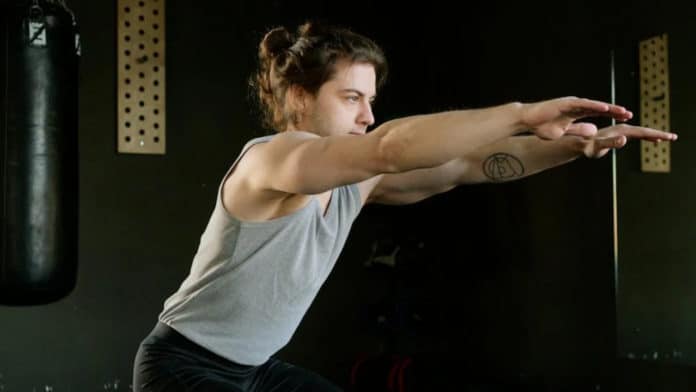In the world of football, the strength and agility of a player can determine a victory or loss on the field. Squats have been used as a form of strength training by professional football players to build lower body strength, power, and agility. This article will explore more variations of squats that football players can train with.
The traditional squats may fall short in the sense that they do not address the movement patterns and muscle engagement required on the football field. Incorporating different squat variations handles such issues and allows for optimal development of strength, agility, and stability, which are all crucial for football players to excel in their sport.
Back Squat
It is renowned as a highly effective exercise due to its ability to develop strength, power and endurance. The key muscle groups targeted include the quadriceps, hamstrings, glutes, and lower back.
A back squat is performed by positioning the barbell across your upper back and gripping it with your hands apart. Bend to the level of your hips and knees while keeping your back straight. Return to the starting point by pushing through your heels.
In relation to movements that are specific to football, back squat training translates to an increase in the explosive drive required for fast acceleration on the field. With regards to deceleration, there is better control and precision when slowing down while trying to change direction or absorb the impact from an opponent’s tackles. Core stability and injury resilience are improved by engaging the core and spinal muscles.
Front Squat
This exercise targets your lower body while placing significant emphasis on core strength and mobility. A barbell is held across the front of the shoulders with a tight grip and the elbows should be raised. Keep your torso upright and squat by bending at your hips and knees. Try to return to the starting point by extending your hips and knees.
It is effective for enhancing the strength and power of the quadriceps, which are essential for explosive movements such as jumping and sprinting. By strengthening the core musculature, mobility and posture are improved.
There is a reduced risk of lower back injuries, which are common during football. It also facilitates the athlete’s ability to achieve the proper positioning required for various football movements, such as blocking and tackling.
Overhead Squat
This engages multiple muscle groups, including the glutes, hamstrings, quadriceps, core, and stabilizer muscles, leading to comprehensive muscle development. In an overhead squat, a barbell is held over the head with the arms fully extended. Squat while stabilizing the weight over the head. Return to the starting point and repeat.
Overhead squats promote a greater level of mobility and flexibility in the body. There is enhanced core stability by engaging the core muscle isometrically while reinforcing proper posture during movement.
The Bulgarian split squat
This is a single-leg variation from the traditional squat that develops not only the lower body but also enhances flexibility and injury resistance as well. A person stands with one foot elevated behind them and rests on a bench. Slowly lower your body by bending the knee and hip until the thigh is parallel to the ground. Drive through your front heel, return to the starting point and repeat.
It is quite unique because it targets unilateral muscular strength, stability, and balance. This shifted focus addresses the strength imbalance between the right and left sides of the body. The Bulgarian split squat resembles a unilateral movement performed in some sports. Replicating this movement during training gives an individual an edge when playing on the field.
Goblet squat
This user-friendly squat variation is suitable for beginners and known for its simplicity and versatility. With both hands, hold a dumbbell at chest level, and have the legs spread apart. Bend to your hip level with your back straight and your thigh parallel to the ground. Return to the starting point.
It develops and strengthens the muscles of the lower body. Improved core stability and proper posture, reduce the risk of injuries on the field. It promotes increased motility in the hips, knees, and ankles compared to the traditional squat, which is quite beneficial for athletes. The goblet squats mimic movement in certain sports, which enhances the athlete’s performance on the field.
It is paramount to maintain proper form and technique while performing squats. This is to maximize its benefits and minimize the risk of lower back injuries associated with it. Breathing technique also plays a crucial role in squat variation. It regularizes the intra-abdominal pressure, which helps stabilize the core and support the spine when exercising.
Professional football players make use of different training strategies, which include squat variation, to develop strength, endurance, and stability. Players are also susceptible to a wide range of injuries on the field; these exercises reduce the risk and improve resilience. By incorporating squat variation during training, individuals can elevate their game and achieve peak performance during the game.




